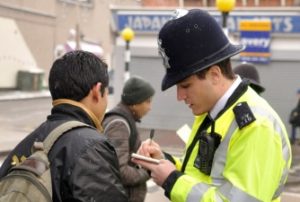Police powers and procedures
Yesterday (26 September 2023), the Home Office published the annual statistics on police powers and procedures: Stop and search and arrests for England and Wales for the financial year 2022/23. The statistics contain information from the 43 territorial police forces in England and Wales, and the British Transport Police (BTP), including data on the:
- change in the use of stop and search in the years ending March 2022 and March 2023
- number of stop and searches carried out under a range of legislative powers
- reason for conducting a search
- outcomes following stop and search
- weapons found from stop and search
- ethnicity, sex and age of persons searched
- analysis of where stop and searches take place within Police Force Areas (also referred to as ‘hotspot analysis’)
- whether force was used in a stop and search
Main results
In total police in England and Wales conducted 547,003 stop and searches in the year ending March 2023, an increase of 3% compared with the year ending March 2022 (up 16,033 from 530,970). With the exception of searches for drugs (which decreased slightly by 3%) and searches under section 43 of the Terrorism Act 2000 (which decreased by 24%), the number of searches conducted in the year ending March 2023 increased across all other search reasons (offensive weapons, stolen property, going equipped, criminal damage, firearms and “other”).
Demographics
Close to two-thirds (63%) of stop and searches in the year ending March 2022 were of males aged between 15 and 34, while this group makes up 13% of the overall population. Males aged 15 to 19 had the highest rate of stop and search, at 71 stop and searches per 1,000 population in the year ending March 2023.
All ethnic groups (based on self-defined ethnicity), either saw a reduction or little to no change in disparity rates compared with the year ending March 2022. Individuals from a black or black British background have the highest disparity rate, at a rate 4.1 times higher than that of those from a white ethnic group across England and Wales. The statisticians are careful to note that these differences do not account for different likelihoods of being either a suspect or a victim of crime.
People who self-defined their ethnicity as either black or ‘mixed or other’ (or were perceived by the officer to belong to one of those ethnicities, if not stated) had an arrest rate following a stop and search of 15%. White people had an arrest rate of 13%, and people who self-defined or were perceived to be of Asian ethnicity had the lowest arrest rate (12%).
Around one-third (32%) of all stop and search took place within the Metropolitan Police Service area. Approximately 25% of stop and search within London took place in just 2.0% of Lower Super Output Areas (LSOA – this is a small area typically made up of 1,000 to 3,000 people) within London, and 50% of stop and searches took place in just 9.0% of LSOAs.
Arrest trends
In the year ending March 2023, 677,261 arrests were made in England and Wales (based on data from 42 police forces and estimated data for Devon and Cornwall). This was an increase of 2% compared with the year ending March 2022, but very similar to the year preceding the COVID-19 pandemic (ending March 2020).
Nearly two thirds (63%) of the overall increase in arrests was accounted for by theft offences. The pattern across forces was mixed. Of the 42 police forces that provided data in the year ending March 2023, 25 forces showed an increased number of arrests compared with the year ending March 2022, while 17 police forces made fewer arrests.
As with previous years, the Metropolitan Police had the greatest number of arrests (15% or 99,169 of total arrests), although the number of arrests made by the MPS and proportion of all arrests in England and Wales has decreased in the last 5 years.
Those aged 20 and under accounted for 17% of arrests, down from 39% of arrests in the year ending March 2007 (when the data series first began). There has been a shift towards those aged 21 and over making up the majority of arrests, 83% in the latest year.
Almost half of all arrests were connected with violence against the person offences (46%). The next most common offence group was theft, which was 13% of all arrests. The proportion of arrests in each offence group has changed compared to 7 years ago (when the offence groupings changed), with the proportion of violence against the person offences up from 35% 7 years ago, and theft offences down from 22% 7 years ago.







